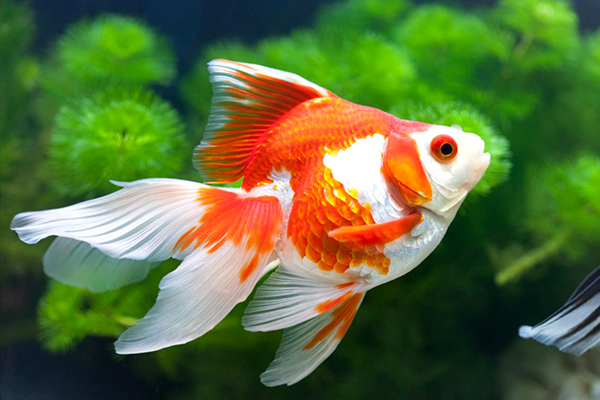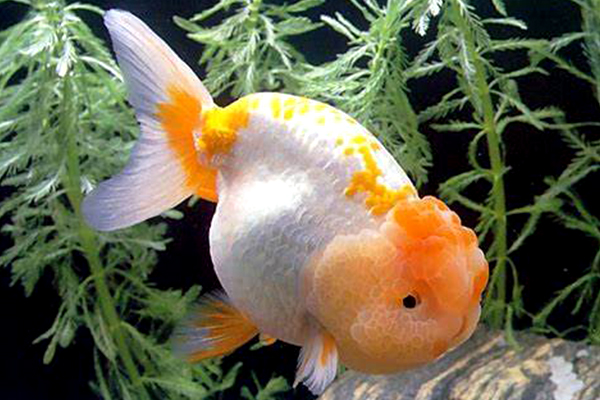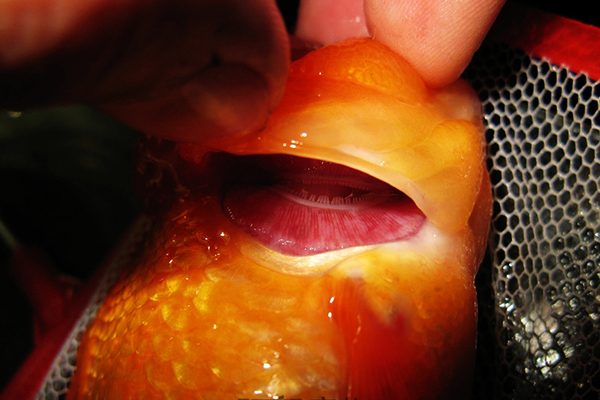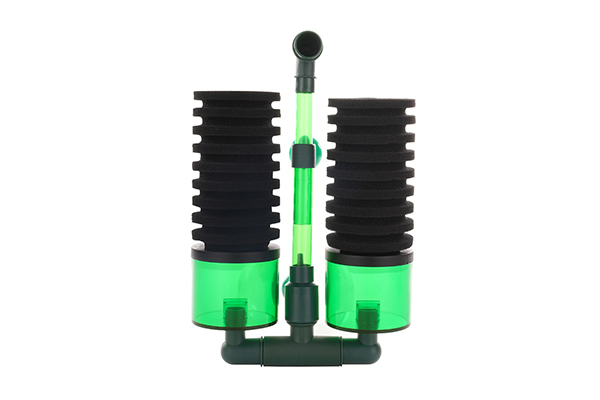By Senzeal | 05 December 2019 | 0 Comments
Four Common Diseases of Goldfish
Estimated reading period: 5 minute
Article words: 573
Goldfish is one of the world's three famous ornamental fishes. It originated in China and has a history of more than 1,700 years. Goldfish is the ornamental fish domesticated from wild sturgeon. China was the earliest country that domesticates goldfish. In the natural world, the color of the crucian's back is gray and its belly is white, which can help them to avoid enemies in nature easily. Occasionally, the pigment cells of catfish are mutated to make the fish golden brown. Without human intervention, such mutant individuals would be eaten by enemies because of their easy exposure. The Chinese started to discover and exploit this variation in earlier times. So, what are the common diseases of goldfish and how to cure them when they are ill?

1.Costiasis
This disease is caused by costia, and it easily occurs in spring and autumn. When the water temperature is 15 to 25 ° C, a large number of oral filariasis that parasitizes the surface of the fish body increase the secretion of mucus and form a milky white attachment. Sick fish often show sluggish movements, clustering in the corners of the pond without moving, and appear to be lethargic. When there are a large number of parasitic mouth worms in the gills, the increased mucus hinders the gas exchange function of the gills, and goldfish often suffocate due to difficulty breathing. It can be treated with formalin or malachite green or salt baths.

2.Myxosporidiosis
Myxospores of goldfish are mainly parasitic on the fish gills. Myxosporia is divided into two types, mysidium, and thelohanellus. The cysts of iodophora often form tumor-like attachments on the gill filaments of fish. When the number is large, the gill cover cannot be closed. So it is also called gill swelling disease. Thelohanellus is small and does not form visible tumors, but when they are large in number, they can interfere with respiratory function. Myxosporia generally does not directly cause fish death, but often mixed infections with other pathogens cause gill rot. There is no medicine suitable for treating this disease for now. When you find your fish have this disease, you can only discard them and disinfect the aquarium to avoid the disease spreading.

3.Gill rot
There are many reasons for gill rotting disease. Stimulation of environmental water quality, infection of parasites, and bacterial infections will cause lesions in gill tissue. Gill tissue may only have local ulceration and necrosis or comprehensive swelling and proliferation. In severe cases, the fish has no appetite. It breathes difficultly and has an extremely high mortality rate, the actual cause must be found during treatment, and the water quality must be effectively improved, and a large number of water changes should be avoided as much as possible.

4.Tail rot disease
Because of the parasitic or physical damage of the parasite, the columnar shape caused damage to the surface of the body such as fins, and secondary pathogens such as bacteria invaded the infection, causing the ulcers and defects of the fin tissue. If there is a parasite infection during treatment, the parasite must be treated first, and then cooperate with antibiotics or antibacterial agents to control bacterial infections.

To avoid your fish getting sick, we suggest you try this Air Driven Sponge Filter. Used with aeration pump, effectively functions aeration and filtering in one, brings a better environment for fishes. Filtration media will help to remove the harmful substances, which will increase the oxygen level in the tank.

You may also want to read:
The Correct Way to Keep Guppy
17 Most Popular Freshwater Fish (1)
Why Do Kissing Fish Kiss? How should they be kept?
What If the Fish Does Not Eat?
Article words: 573
Goldfish is one of the world's three famous ornamental fishes. It originated in China and has a history of more than 1,700 years. Goldfish is the ornamental fish domesticated from wild sturgeon. China was the earliest country that domesticates goldfish. In the natural world, the color of the crucian's back is gray and its belly is white, which can help them to avoid enemies in nature easily. Occasionally, the pigment cells of catfish are mutated to make the fish golden brown. Without human intervention, such mutant individuals would be eaten by enemies because of their easy exposure. The Chinese started to discover and exploit this variation in earlier times. So, what are the common diseases of goldfish and how to cure them when they are ill?

1.Costiasis
This disease is caused by costia, and it easily occurs in spring and autumn. When the water temperature is 15 to 25 ° C, a large number of oral filariasis that parasitizes the surface of the fish body increase the secretion of mucus and form a milky white attachment. Sick fish often show sluggish movements, clustering in the corners of the pond without moving, and appear to be lethargic. When there are a large number of parasitic mouth worms in the gills, the increased mucus hinders the gas exchange function of the gills, and goldfish often suffocate due to difficulty breathing. It can be treated with formalin or malachite green or salt baths.

2.Myxosporidiosis
Myxospores of goldfish are mainly parasitic on the fish gills. Myxosporia is divided into two types, mysidium, and thelohanellus. The cysts of iodophora often form tumor-like attachments on the gill filaments of fish. When the number is large, the gill cover cannot be closed. So it is also called gill swelling disease. Thelohanellus is small and does not form visible tumors, but when they are large in number, they can interfere with respiratory function. Myxosporia generally does not directly cause fish death, but often mixed infections with other pathogens cause gill rot. There is no medicine suitable for treating this disease for now. When you find your fish have this disease, you can only discard them and disinfect the aquarium to avoid the disease spreading.

3.Gill rot
There are many reasons for gill rotting disease. Stimulation of environmental water quality, infection of parasites, and bacterial infections will cause lesions in gill tissue. Gill tissue may only have local ulceration and necrosis or comprehensive swelling and proliferation. In severe cases, the fish has no appetite. It breathes difficultly and has an extremely high mortality rate, the actual cause must be found during treatment, and the water quality must be effectively improved, and a large number of water changes should be avoided as much as possible.

4.Tail rot disease
Because of the parasitic or physical damage of the parasite, the columnar shape caused damage to the surface of the body such as fins, and secondary pathogens such as bacteria invaded the infection, causing the ulcers and defects of the fin tissue. If there is a parasite infection during treatment, the parasite must be treated first, and then cooperate with antibiotics or antibacterial agents to control bacterial infections.

To avoid your fish getting sick, we suggest you try this Air Driven Sponge Filter. Used with aeration pump, effectively functions aeration and filtering in one, brings a better environment for fishes. Filtration media will help to remove the harmful substances, which will increase the oxygen level in the tank.

You may also want to read:
The Correct Way to Keep Guppy
17 Most Popular Freshwater Fish (1)
Why Do Kissing Fish Kiss? How should they be kept?
What If the Fish Does Not Eat?
Leave a Reply
Your email address will not be published.Required fields are marked. *
CATEGORIES
- Aquarium Knowledge
- Aquarium Fishes
- Aquatic Plants
- Other Aquatic Creatures
- Best Aquarium Products
- Aquarium Light
- Aquarium Feeding Knowledge
- Fish Tank & Turtle Tank
- Aquarium Cleaning
- Fish Breeding
- Aquarium Heater
- Aquarium Filtration
- Planted Tank CO2
- Aquarium Decoration
- Shrimp Knowledge
- Aquascaping
- Algae
- Guppy
- Goldfish
- KOI
- Turtle
- Angelfish
- Betta
- Arowana
- Anemone
- Snails
- Fish Keeping
- Tropical
- CAT
- DOG
- BIRD
TAGS